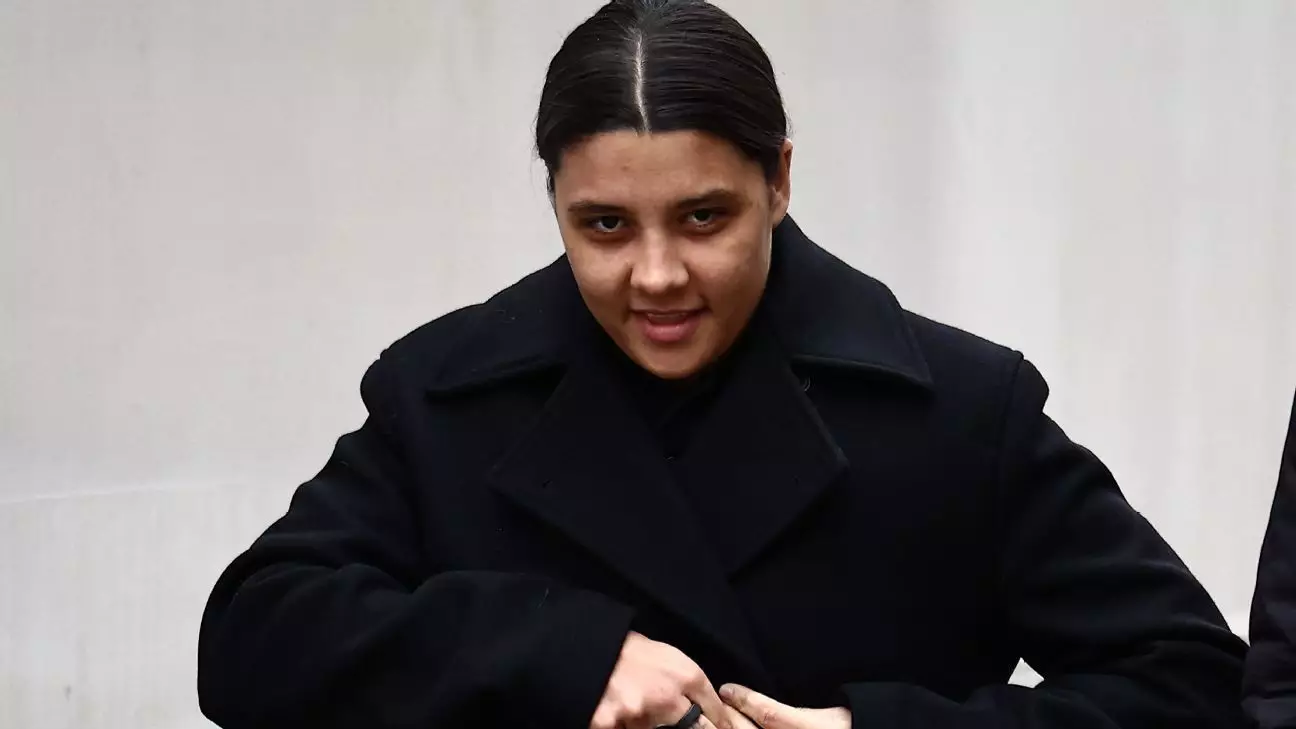The ongoing legal proceedings involving Australian football star Sam Kerr have captivated the public and raised pivotal questions about racial sensitivity, accountability, and the role of law enforcement. Charged with allegedly causing racially aggravated harassment, Kerr’s case has transformed from a seemingly straightforward incident to a complex trial filled with emotional testimony and the scrutiny of judicial procedures. This article delves into the core elements of the case, exploring the incident, the players involved, and the broader implications for society.
On January 30, 2023, the atmosphere in South West London turned tumultuous when Kerr, the captain of Australia’s national team, along with her partner, West Ham midfielder Kristie Mewis, were reportedly involved in a fracas concerning a taxi ride. Details of the night reveal that the taxi driver accused the couple of refusing to pay for damages incurred during the ride, asserting that one of them had fallen ill and smashed the rear window of the vehicle. This assertion raises questions about the pressure and strains often present in nightlife situations, especially concerning alcohol consumption and consequent altercations.
The driver’s complaint that he had acted affably deteriorated into a confrontation prompting Kerr and Mewis to seek assistance from the police. The taxi driver claimed they were locked in the car for an extended period, suggesting a chaotic and distressing atmosphere. Both Kerr and Mewis refuted the driver’s version of the events, alleging that he had exhibited erratic behavior—rapid acceleration and frequent stops—which added layers of complexity to the entire situation.
As the legal proceedings commenced, the court heard from Officer Stephen Lovell, who stated he felt “belittled and upset” by comments allegedly made by Kerr during their encounter. The assertion that she called him “stupid and white” not only set the stage for the charge against her but also sparked debates over the appropriate responses of law enforcement officers to public figures’ remarks. Lovell’s response to his alleged humiliation became contentious during cross-examination, wherein it was underscored that his initial statements to the Crown Prosecution Service did not reflect the emotional impact that he later claimed to feel.
The Crown Prosecution Service (CPS) initially declined to pursue charges, suggesting the gravity of the officer’s emotional response was not sufficient for prosecution. However, a subsequent push by the police led to a re-evaluation of the case, ultimately culminating in the charges against Kerr nearly a year after the confrontation occurred. Such a timeline raises important discussions regarding how and when law enforcement may take action based on perceived grievances.
As details of the trial unfold, the public dialogue surrounding celebrity influence has surged. Kerr is not merely an athlete; she is a role model for aspiring footballers and has attained significant prominence in women’s sports. Having represented Australia on a global stage, her actions are under a microscope, leading to critical media coverage that bridges sports, celebrity culture, and the dynamics of race and power.
Defense attorney Grace Forbes’ questioning of Lovell regarding his motivations emphasizes this point. The interplay between Kerr’s public persona and the officer’s reaction highlights broader social dynamics—specifically how public figures are scrutinized differently compared to everyday individuals. Forbes’s interrogation attempted to establish whether the officer’s response was influenced by Kerr’s notoriety, suggesting a potential overreach of legal actions against someone in the spotlight versus someone less well-known.
The trial of Sam Kerr encapsulates a series of complex societal issues surrounding race, celebrity, and law enforcement reaffirmation. As the court deliberates over the specifics of the incident and the implications of the comments made, it becomes evident that the outcomes will resonate far beyond the courtroom. They will influence not only how we perceive acts of aggression and confrontation but will also help define the responsibilities of public figures and the debates surrounding racial discourse. This case serves as a reminder of the profound impact of words, the nuances of legal interpretations, and the pervasive nature of societal expectations. As the trial continues, observers must reflect on the broader implications of this incident and what it means for future interactions between public figures and law enforcement agencies.

